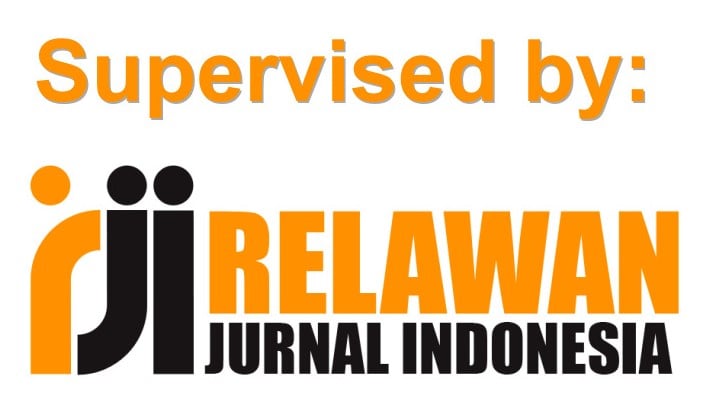Uji Validitas Konstruk Tes Wechsler Intelligence Scale For Children (WISC)
DOI:
https://doi.org/10.18592/jsi.v9i2.5599Keywords:
Inteligeensi, WISC, Analisis Faktor Konfirmatori, Reliabilitas, Validitas, Intelligence, Confirmatory Factor Analysis, Reliability, Validity,Abstract
As one of the psychological instruments that successfully provides an overview of the level of intelligence of children, the Wechsler Intelligence Scale For Children (WISC) test needs to be evaluated its validity with psychometric test procedures. The Wechsler Intelligence Scale For Children (WISC) test consists of 10 subtests in which each subtest has many diverse items. This study included 315 kindergarten students with an age range of 5-6 years. The data obtained from it is then analyzed using confirmatory factor analysis to test the validity of the construct. This study showed that the model had a good fit with a p-value of 0.066 and an entire subtest fit.References
Baldwin, A. L. (1940). Review of The measurement of adult intelligence. The Journal of Abnormal and Social Psychology.
Bandura, A., Freeman, W. H., & Lightsey, R. (1999). Self-Efficacy: The Exercise of Control. Journal of Cognitive Psychotherapy.
Beaujean, A. A., Benson, N. F., McGill, R. J., & Dombrowski, S. C. (2018). A misuse of IQ scores: Using the dual discrepancy/consistency model for identifying specific learning disabilities. In Journal of Intelligence.
Brown, T. A. (2006). Confirmatory factor analysis for applied research. The Guilford Press.
Canivez, G. L. (2013). Incremental criterion validity of WAIS-IV factor index scores: Relationships with WIAT-II and WIAT-III subtest and composite scores. Psychological Assessment.
Canivez, G. L., Grieder, S., & Buenger, A. (2021). Construct Validity of the German Wechsler Intelligence Scale for Children–Fifth Edition: Exploratory and Confirmatory Factor Analyses of the 15 Primary and Secondary Subtests. Assessment.
Chin, W. W. (1998). The Partial LEast Squares Approach to Structural Equation Modelling. In Modern Methods for Business Research (pp. 295–336).
Flanagan, D. P., McGrew, K. S., & Ortiz, S. O. (2000). The Wechsler Intelligence Scales and Gf-Gc theory: A contemporary approach to interpretation. Allyn & Bacon.
Ghozali, I., & Fuad, F. (2008). Structural Equation Modeling. Universitas Diponegoro.
Hair, J., Black, W., Babin, B., & Anderson, R. (2010). Multivariate Data Analysis Seventh Ed. In Multivariate Data Analysis: A Global Perspective.
Henseler, J., & Schuberth, F. (2020). Using confirmatory composite analysis to assess emergent variables in business research. Journal of Business Research.
Kezer, F., & Arik, R. S. (2012). An Examination and Comparison of the Revisions of the Wechsler Intelligence Scale for Children. Procedia - Social and Behavioral Sciences.
LITTLE, M. (1960). Counter-transference *. British Journal of Medical Psychology, 33(1).
Munazilin, A. (2013). Implementasi Sistem Pakar Untuk Mengetahui Bakat Anak Melalui Tes WISC (Wechsler Intelligence Scale For Children) Menggunakan Metode Forward Chaining. Jurnal Ilmiah Teknologi Informasi Asia.
Nanik. (2000). Penelusuran Karakteristik Hasil Tes Inteligensi WISC Pada Anak Dengan Gangguan Pemusatan Perhatian dan Hiperaktivitas. Jurnal Psikologi.
Schafer, R. (1956). Wechsler Adult Intelligence Scale (WAIS). Journal of Consulting Psychology.
Thompson, B. (2004). Exploratory and confirmatory factor analysis: Understanding concepts and applications. [References]. In (2004).
Umar, J., & Nisa, Y. F. (2020). Uji validitas konstruk dengan CFA dan pelaporannya. Jurnal Pengukuran Psikologi Dan Pendidikan Indonesia, 9(2), 1–11.
Wechsler, D. (1939). The measurement of adult intelligence. Williams & Wilkins Co.
Zainudin, M., Subali, B., & Jailani. (2019). Construct validity of mathematical creativity instrument: First-order and second-order confirmatory factor analysis. International Journal of Instruction.
Downloads
Published
How to Cite
Issue
Section
License
Copyright (c) 2022 Medianta Tarigan, Fadillah .

This work is licensed under a Creative Commons Attribution-NonCommercial 4.0 International License.
Authors who publish with this journal agree to the following terms:
- Authors retain copyright and grant the journal right of first publication with the work simultaneously licensed under a Creative Commons Attribution License that allows others to share the work with an acknowledgment of the work's authorship and initial publication in this journal.
- Authors can enter into separate, additional contractual arrangements for the non-exclusive distribution of the journal's published version of the work (e.g., post it to an institutional repository or edit it in a book), with an acknowledgment of its initial publication in this journal.
- Authors are permitted and encouraged to post their work online (e.g., in institutional repositories or on their website) before and during the submission process, as it can lead to productive exchanges, as well as earlier and greater citation of published work (See The Effect of Open Access).





















